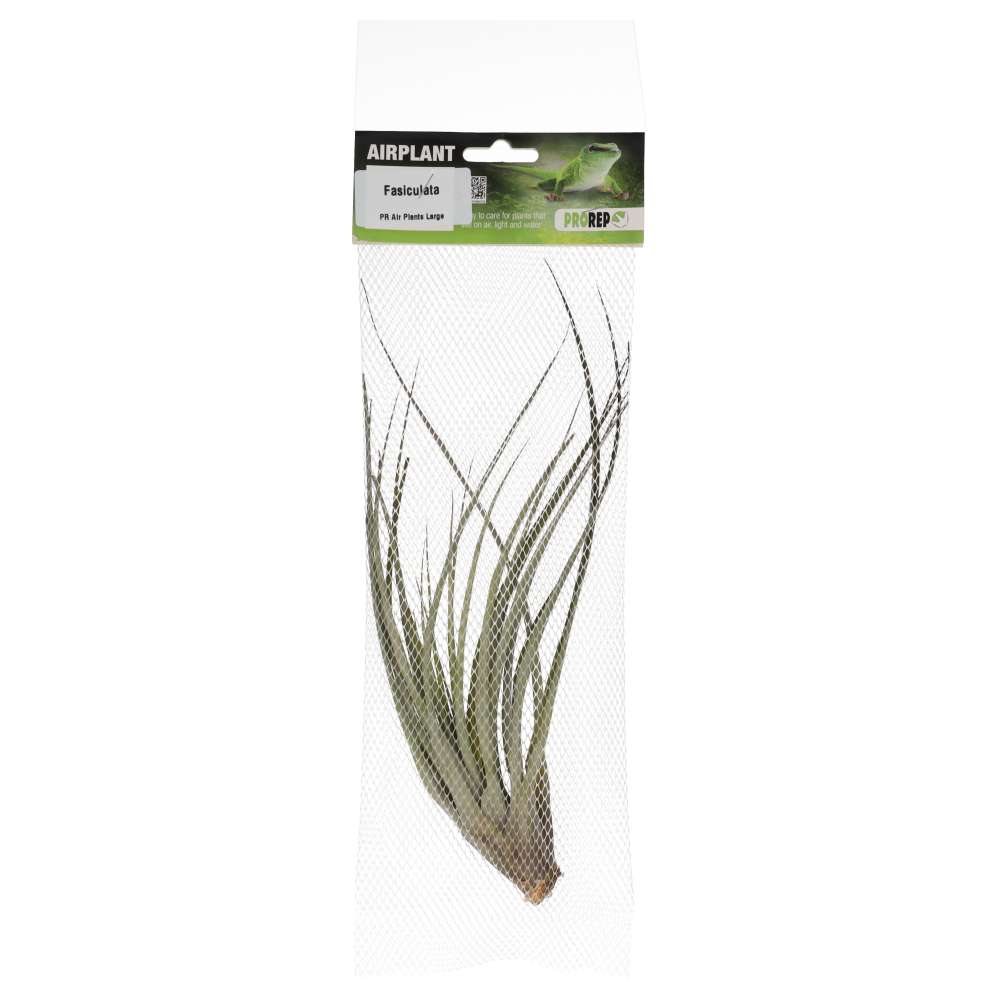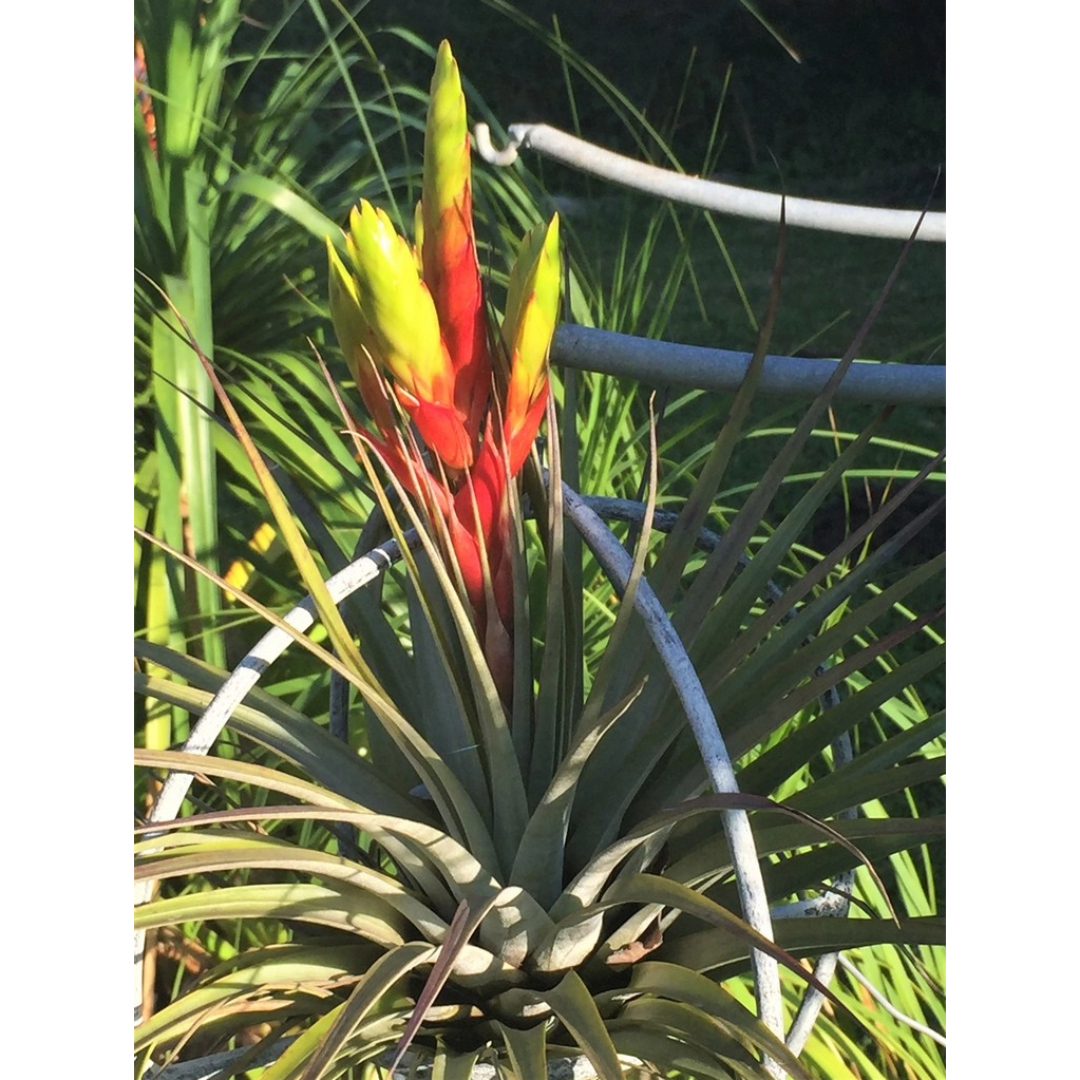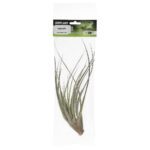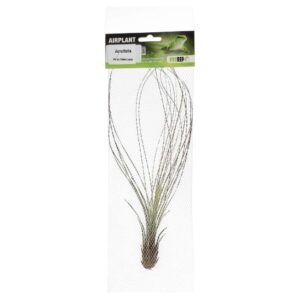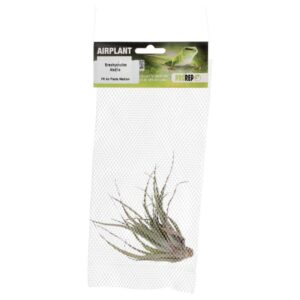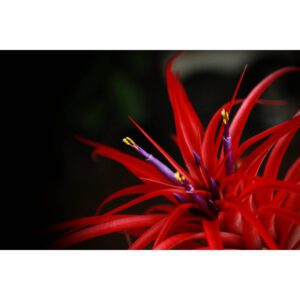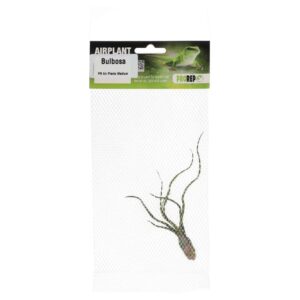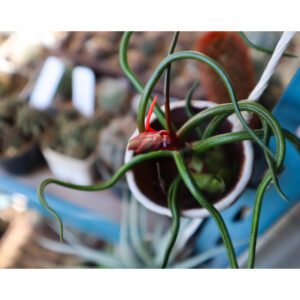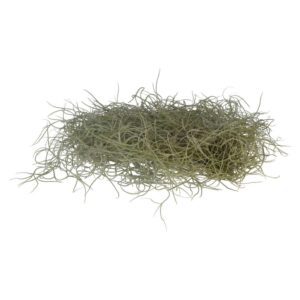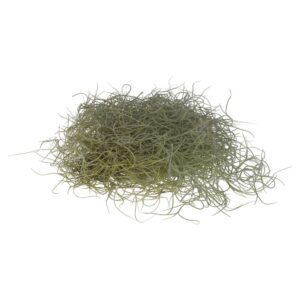Tillandsia fasciculata
Mature Appearance:
Large rosette up to 20–25 cm across; leaves long (15–25 cm), stiff, and arching, with dense silver trichomes.
Under strong light, entire rosette may take on a silvery or pinkish cast.
Flower spike robust (15–25 cm tall) with yellow bracts and violet blossoms.
Life Cycle:
Blooming: Often 3–5 years until bloom; very showy inflorescence.
Pups: 5–10 pups emerge around the base—pups grow to 10 cm rosettes within 1–2 years.
Mother Decline: Mother slowly dies back after pups are established; pups eventually replace it.
Enclosure Use:
Best Fit:
Large arboreal or semi‐arboreal enclosures (e.g., green tree pythons, adult chameleons, large tree frogs, small rainforest species).
Ideal as a centrepiece either mounted on vertical back panels or sitting on a shelf—its sprawling rosette offers multiple perching levels.
Works well in paludariums along with epiphytic orchids and ferns, creating a lush canopy.
Care:
Light:
Bright, filtered light or morning sun (400–800 µmol·m⁻²·s⁻¹). Protect from hot afternoon rays.
Water: Mist 3–4×/week; soak 30 min weekly. In very humid rooms (≥70% RH), reduce to misting only.
Airflow:
Strong airflow necessary—install near a vent or use a small enclosure fan.
Temps: 18–28 °C; tolerate day highs to 30 °C if humidity is high; nights ≥15 °C.
General Notes on Life Cycle & Pup Care
Flowering & Senescence:
All Tillandsia are monocarpic—they bloom once, produce pups, then the mother plant gradually withers.
Pup Removal or Cluster Growth:
Keep Attached:
If you want a bushy display, leave pups attached. Over time they form a clustered mass.
Separate Pups:
Gently twist or cut pups away when they reach ~⅓–½ the mother’s size (3–5 cm). Use sterile shears, let cut ends callous for 24 hours, then mount or pot separately.
Nutrient Supply:
Tillandsias absorb nutrients from rainwater or foliar feeding. In a terrarium: occasional foliar misting with a very dilute (¼ strength) orchid/bromeliad fertilizer during growing season can encourage stronger growth and better coloration. Rinse afterward with clear water to avoid residue.
Overview of Enclosure Placement & Compatibility
Arboreal Reptiles (Geckos, Tree Snakes, Chameleons):
Mount mid‐ to upper‐level on cork bark or natural branches—air plants stay dry at leaf tips and provide perches.
Paludariums (Dart Frogs, Newts): Position so bases are above standing water but within mist zones; high humidity helps their growth and stability.
Terrestrial Reptiles (Small Tortoises, Skinks): Generally, avoid placing air plants on floor substrate where they stay too wet. Instead, mount on vertical surfaces.
Nocturnal Reptiles (Crepuscular Geckos, Tree Frogs):
Many Tillandsias thrive in lower‐light understory conditions—select varieties like Ionantha scaposa or Brachycaulos multiflora that tolerate moderate light.
Basic Care Tips for All Tillandsias in Reptile Enclosures
Light:
Most need bright, indirect light; avoid full midday sun inside a glass vivarium to prevent heat buildup.
Watering:
Misting:
Use a fine‐mist sprayer; wet entire plant until beads form on leaves.
Soaking:
Remove and soak in dechlorinated, room‐temperature water. For large species (e.g., T. fasciculata), soak 20–30 minutes; smaller ones 10–15 minutes.
Frequency:
In a high‐humidity vivarium (≥70% RH), misting 2×/week may suffice. In drier rooms, mist 3–4 times weekly with a weekly soak.
Airflow: Ensure leaves dry within 4–6 hours to prevent rot. Use vent fans or leave enclosure slightly ajar after misting.
Temperature: Most thrive between 18–28 °C. Avoid prolonged humidity with temperatures >30 °C, which can lead to fungal issues.
Fertilizer:
Optional:
use a bromeliad or tillandsia‐specific foliar fertilizer at ¼ strength once a month during active growth. Rinse thoroughly after to prevent residue.
Mounting & Display:
Attach using fishing line, thin wire, or ProRep High Temp Fixative (high‐temp silicone) to cork bark, rock, or driftwood. Do not use glue that can leach toxins.
Position so water does not pool in leaf rosettes—provide an angle or slight tilt to assist drainage.
By integrating these air plant species into your reptile vivaria, you create a more natural, three‐dimensional environment—offering climbing surfaces, humidity buffering, and visual interest—while providing minimal maintenance needs. Proper placement, regular but moderate watering, and good airflow will ensure your Tillandsias thrive alongside your reptiles.

